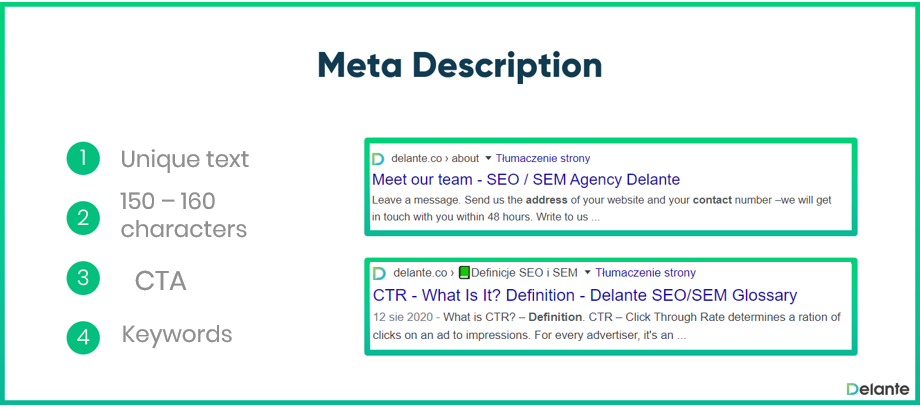SEO Content Writing Tips & Techniques

Their are many SEO Content Writing Tips & Techniques that you should know to improve your content’s visibility with proven SEO writing strategies. Search engine optimization (SEO) is a set of techniques designed to increase traffic to your website. Put another way, it’s a process of optimizing the content on your website to make it rank higher on search engine result pages.
In a crowded landscape where everybody is a content writer and has access to AI tools, writing high-quality content for readers isn’t as much of an effort as it used to be. Even so, 91 percent of online content does not receive any search traffic. SEO is a must for any online writing, especially from a keyword perspective, and correctly mapping those keywords to pages/posts.
What is SEO Content Writing?
SEO content writing is the practice of creating content that is optimized for search engines. It involves incorporating relevant keywords, structuring content effectively, and following SEO best practices to improve the content’s visibility and ranking in search engine results pages (SERPs). SEO writing includes using relevant keywords, internal and external links, and on-page SEO without sacrificing readability or quality. Remember, while search engines rank your content, it will still be read by human readers. While writing content you should take care of your audience for what should they like .
SEO content writing Tips & Techniques

Their are many SEO Content Writing Tips and techniques that will help you to improve your content on website and drive traffic.
- Research your Content
- Write a concise meta description
- Write Growth-focused content
- Target Featured Snippets
- Add Images with Alt Text
- Use Links Strategically
- Write Compelling Headlines
- Get feedback, then edit and polish the draft
Research your Content:

Research is what gives content its validity. From an SEO perspective, content includes everything from blog posts, product descriptions, and testimonials to captions, interactive elements, and landing pages. Use keyword research tools like Google Keyword Planner, Ahrefs, Semrush, or Moz to identify relevant keywords and phrases related to your topic.
Research your content” essentially means thoroughly investigating and gathering information relevant to the topic you’re writing about. It’s a fundamental aspect of content creation, ensuring accuracy, credibility, and depth in your writing.
Write a concise meta description

A meta description is a summary of a web page that appears as part of search results. This snippet of text gives users an idea of the content they will find on a page and whether that content is going to be relevant to their search. some tips for writing a concise and effective meta description for SEO:
- Keep it under 160 characters: Most search engines truncate meta descriptions longer than 160 characters, so aim to keep it concise.
- Include your primary keyword: Naturally incorporate your main target keyword or phrase into the meta description.
- Use an active, compelling tone: Craft a meta description that entices users to click through from the search results. Use an active voice and highlight the key benefits or value proposition.
- Accurately summarize the page content: The meta description should accurately reflect the topic and content of the page it’s describing, without misleading users.
- Differentiate from other search results: Make your meta description stand out and compel users to choose your result over others on the same topic.
Write growth-focused content

Growth-focused content is built around a specific digital marketing objective, like increasing traffic to a website as quickly as possible. Start by zeroing in on a list of SEO-friendly content topics relevant to your website. Then, create content around those topics with the express goal of satisfying search demands.
This SEO and content marketing strategy will help you connect with your target audience, engage them with informative and insightful content, and keep them returning for more. These three actions will help you create effective growth-focused content.
- Know your audience. Knowing what your audience wants is the first priority in content creation. You can improve your understanding of your audience by doing market research, collecting demographic information. Then analyzing customer feedback and testimonials, and creating audience personas.
- Create valuable content. You can expect positive SEO results only when your content has implicit value for a large section of your audience. Develop authority in your subject matter by making your content credible, unique, and interesting.
- Be consistent. In the context of SEO, consistency cuts across several dimensions. Quality is the most important of them. The general tone and attitude of your content are another.
Target Featured Snippets
A featured snippet is a portion of highlighted text that appears at the top of a Google search engine results page (SERP). Google refers to this space as “Position 0.” A featured snippet answers a search query directly with the relevant information from the top-ranking page. And Featured snippets are also placed above the organic search results.
So, searchers can get a gist of the information directly from the results page. Featured snippets typically appear for question-based queries, prepositionial phrases, and searches seeking definitions, steps, or lists.
Some Tips for Creating Content that Targets and Aims to Earn Featured Snippets in Search Engine Results:
1) Identify Query Types Featured snippets typically appear for question-based queries, prepositionial phrases, and searches seeking definitions, steps, or lists. Use tools like Ahrefs or SEMrush to analyze the top-ranking pages and identify common query types.
2) Format for Featured Snippets Structure your content using formats that search engines commonly use for featured snippets:
a) Questions & Answers
b) Ordered/Unordered Lists
c) Tables
d) Step-by-Step Instructions
e) Definitions/Explanations
3) Use Clear Headings and Structure Break up your content using clear headings (H2, H3, etc.) that directly answer query questions. Search engines often pull featured snippets from well-structured headings.
4) Optimize for Concise Answers Featured snippets provide concise answers, so optimize your content to directly and succinctly answer queries within 40-60 words.
Add Images with Alt Text

For each image, there should be an option to add alt text. This is typically done through the image properties or settings. Write a brief, descriptive alt text that conveys the content or purpose of the image. Alt text is not only essential for SEO but also for enhancing accessibility and user experience. It is read aloud by screen readers, making it easy for the visually impaired to access online resources.
- Be Descriptive: The alt text should accurately describe the image’s content and context. Provide enough detail to convey the image’s purpose and relevance to the surrounding text.
- Include Keywords: Naturally incorporate relevant keywords or phrases into the alt text, but avoid keyword stuffing or using keywords unnaturally. This helps with image search optimization.
- Keep It Concise: Aim for alt text that’s around 5-15 words long. Any longer and it may be truncated or ignored by screen readers and search engines.
- Use Proper Capitalization and Punctuation: Capitalize the first letter of each sentence and proper nouns. Use periods at the end of complete sentences.
Use links strategically

Internal links (connecting one page on your website with another) help Google understand the relevance, relationship, and value of different pages on your website. External links or backlinks (connecting your website with other websites) determine the SEO relevance and popularity of a website or page.
Here are some tips for using links strategically:
- Internal Linking: Link to relevant pages within your own website whenever appropriate. This helps search engines understand the structure and hierarchy of your site, and spreads link equity (ranking power) to important pages. Internal links also provide a better user experience by allowing visitors to easily navigate to related content.
- Anchor Text Optimization: When internal linking, use descriptive anchor text that accurately describes the page you’re linking to. For example, instead of “click here,” use text like “healthy meal prep recipes” when linking to a recipes page.
- External Linking: Link out to authoritative, trustworthy external sources to support your claims, provide additional context, and establish your own content as a credible resource hub.
Write compelling headlines

A compelling headline in your H1 page title can affect the number of people who click on your page when it shows up in the search results for relevant search queries. Even though CTR is not a direct ranking factor, it can affect your rankings if an underwhelming headline in your H1 meta tag isn’t enticing enough for readers to want to read your article.
Follow these guidelines to write an effective headline for your meta title.
- Keep your headline under 70 characters
- Include your primary keyword early on to signal relevancy
- Be descriptive yet concise
- Don’t keyword stuff your page titles
- Make it specific and relevant to your audience
- Use number and convey benefits to make a headline more appealing
Get feedback, then edit and polish the draft

some tips for getting feedback, then editing and polishing your draft content:
Get Feedback:
- Ask colleagues or subject matter experts to review your draft and provide honest feedback on areas like clarity, accuracy, structure, and readability.
- Use online tools and services like Writer.com, Fiverr, or Upwork to get affordable feedback from professional writers or editors.
- Share your draft on relevant online communities, forums or social media groups to gather input from your target audience.
- Run it through Online Writing Assistants like Grammarly or ProWritingAid to identify potential improvements.
Edit and Polish:
- Review all feedback carefully and keep an open mind. Look for patterns and areas that multiple reviewers flagged as needing improvement.
- Check for logical flow, proper structure (introduction, body, conclusion), and effective transitions between ideas.
- Ensure your content is comprehensive and thoroughly addresses the main topic as well as relevant subtopics.
- Refine your writing style by tightening wordy phrases, varying sentence structure, and eliminating unnecessary jargon.
- Double-check facts, figures, quotes, and references to ensure accuracy.
Conclusion
In today’s digital landscape, creating high-quality, engaging content is no longer enough to stand out and attract your target audience. To truly succeed with content marketing, it’s crucial to incorporate effective SEO writing techniques that enhance your content’s visibility and discoverability in search engines.
SEO content writing is an ongoing process that requires continuous monitoring, analysis, and refinement. Stay up-to-date with the latest trends and best practices, and don’t be afraid to experiment with different techniques to find what works best for your business and target audience.



